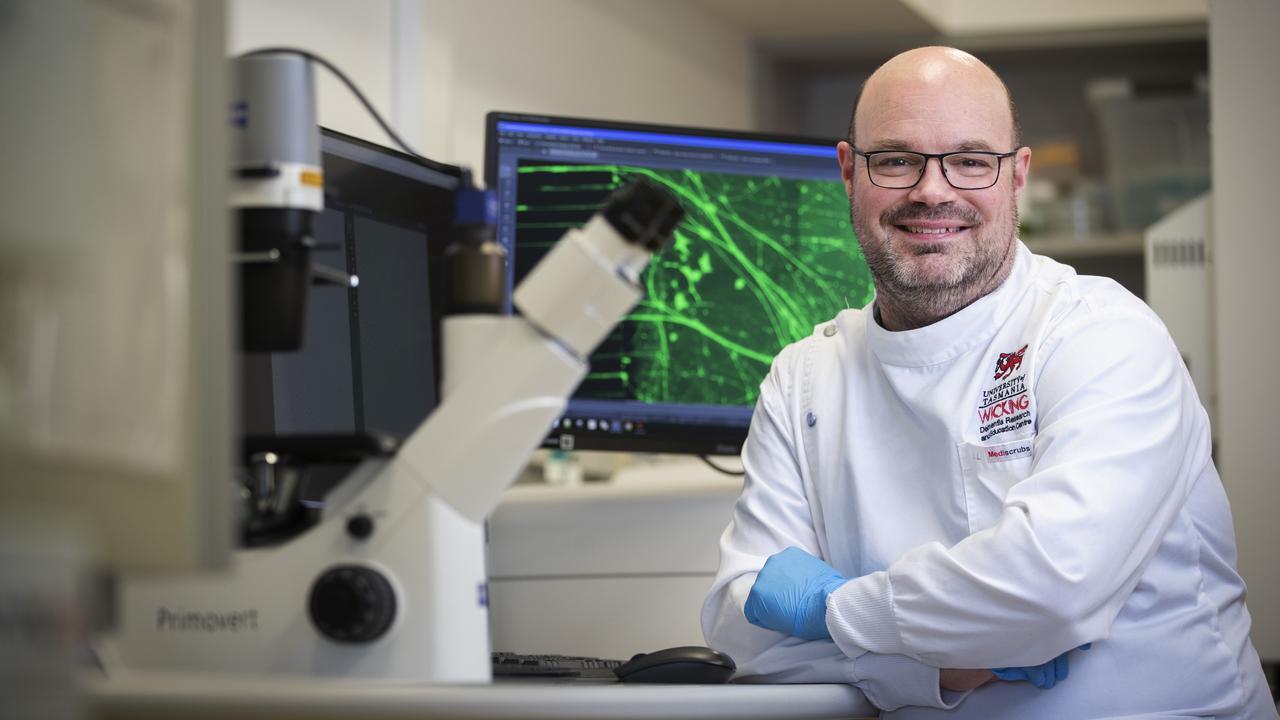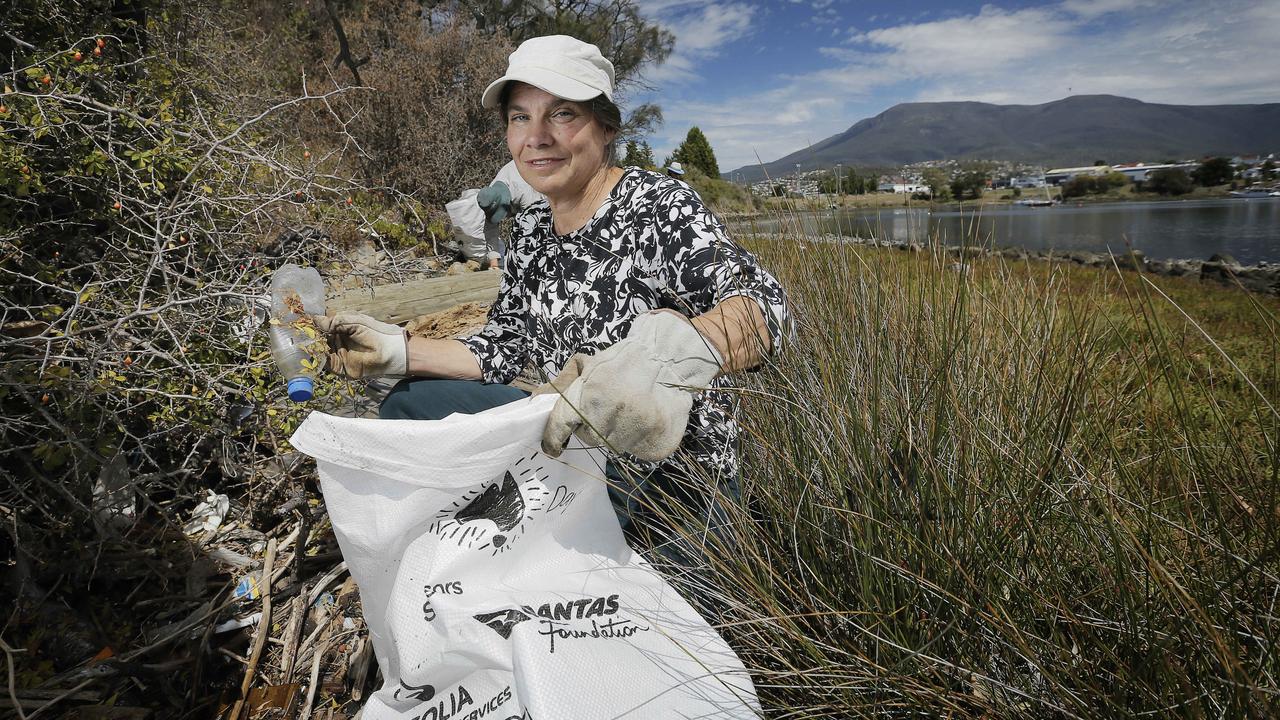Scientists call for more vigilant testing to discover effects of bacteria on consumers
Tasmanian scientists concerned about possible links between blue-green algae and illnesses such as motor neurone disease are calling for more vigilant testing of drinking water in river catchments and storage facilities. What they’re concerned about.

Tasmanian scientists concerned about possible links between blue-green algae and serious illnesses such as motor neurone disease are calling for more vigilant testing of drinking water in river catchments and storage facilities.
The experts argue more should be done to monitor and test chemical compounds such as BMAA, a bacteria produced by blue-green algae, in the Derwent Valley – where the river is the primary source for household water across greater Hobart.
Authorities such as TasWater and the Environment Protection Agency (EPA) are confident there are no immediate health risks to the community, with TasWater strictly following the national standard.
“Tasmanians can trust that their water is absolutely safe to drink and meets Australian Drinking Water Guideline requirements,” TasWater head of water and environment services Fran Smith told the Mercury.
But scientists such as Dr Lisa-Ann Gershwin have reservations.

“We’ve got blue-green algae blooming in our rivers and being stimulated by the vast amounts of nutrients that are pouring out of industries into water – that’s our drinking water,” she said.
“They’re not testing for BMAA. They’re not monitoring … and we have no idea if it’s in there or not, or how much or how often or anything, and there’s nothing being done.”
Dr Gershwin said blue-green algae exists in Hobart’s rivers and blooms in the presence of sunshine and nutrients.
Nutrient sources in the Derwent catchment can be caused from salmon hatcheries, sewage treatment systems and composting and run off from agriculture, livestock and forestry industries.
“We know that 95 per cent of the blue-green algae that has been tested globally produce BMAA and we know that species dominant in our rivers are known to produce BMAA,” Dr Gershwin said.
“We know that the cyanobacteria [blue-green algae] are in our rivers sometimes in huge numbers and we know they release BMAA.
“It is really important to be honest about what we don’t know.
“What we don’t know is if there is BMAA in the rivers. Is BMAA in my glass of water? What is that BMAA going to do to me? How much does it take to cause disease? Nobody knows that answer.”
BMAA has been a contentious debate among scientists and governments for years.
It has not been recognised to be hazardous to human health and current advice to TasWater does not suggest BMAA as a water quality hazard to human health.
UTAS Menzies Centre associate professor Tony Cook said BMAA and its links to neurodegenerative diseases was still debatable because not enough is known about how it affects different cell types.

“There’s a few things we do know that might be the causal link, but we also don’t know the genetics of the people that are necessarily exposed to that,” he said.
“Whether being exposed to it is a problem, or whether for some people with risk of genetics is the problem – that’s one of the things that might come out of our research study.
“But there’s certainly anecdote evidence that says we need to investigate it and I think if it can be robustly verified at an epidemiological level maybe there is something that we need to start paying a bit more attention to.”
In May, the NSW government announced it would invest $2m to research links between blue-green algae and motor neurone disease after the Riverina region was found to have disproportionate rates of MND and is a national hotspot for blue-green algae.
Studies overseas and in Australia suggest they have also studied the links.
Tasmanian scientist Christine Coughanowr published a research paper with the Tasmanian independent Science Council which states toxic algal blooms are a growing risk to waterways, including the River Derwent.
“Cyanobacteria blooms can cause a broad range of problems including oxygen depletion and fish kills, harm to livestock, as well as human health impacts related to both physical contact and drinking water,” she wrote.

“These can include both short and long-term health impacts, including links to motor-neuron disease. A precautionary strategy is urgently needed to monitor and prevent these outbreaks as – once established – cyanobacteria blooms can be difficult/impossible to eradicate.”
Hobart-based aqua ecologist Chris Bobbi said there was a “melting pot” of activities that could negatively affect the river, but blue-green algae was a natural part of the aquatic environment.
“Blue-green algae occurs naturally, but the issue is if nutrient conditions and environmental conditions like water temperature and flow are more favourable to that blue-green algae which can become a more dominant feature of the ecosystem,” he said.
“But we mustn’t forget that the Derwent is a regulated system. We regulate the flow out of
Meadowbank Dam.
“We also have agricultural and forestry activities, which obviously are using herbicides and pesticides and fertilisers, and can affect the ecosystem of the river.
“They all influence the river to a degree. That means that what happens in the river can be caused by man, but overlays this natural environmental variability.
“We don’t know how much modification a system can handle before it behaves in an unnatural way.”
Mr Bobbi said we need to deal with the whole system and not just one chemical.
“We’re struggling with the environmental consequences that impact what we want to do with the water,” he said.
“We want to drink water out of the Derwent, but we also want to grow crops up the Derwent in the catchment.
“We want to be able to grow trees and log and we want to produce hydro electricity, but we also want to drink the water and we want fish farms up there.
“We’re altering the whole ecosystem up there and algal blooms are one of the things that it’s producing as a result. We need to deal with the whole ecosystem.”
tia.ewen@news.com.au




